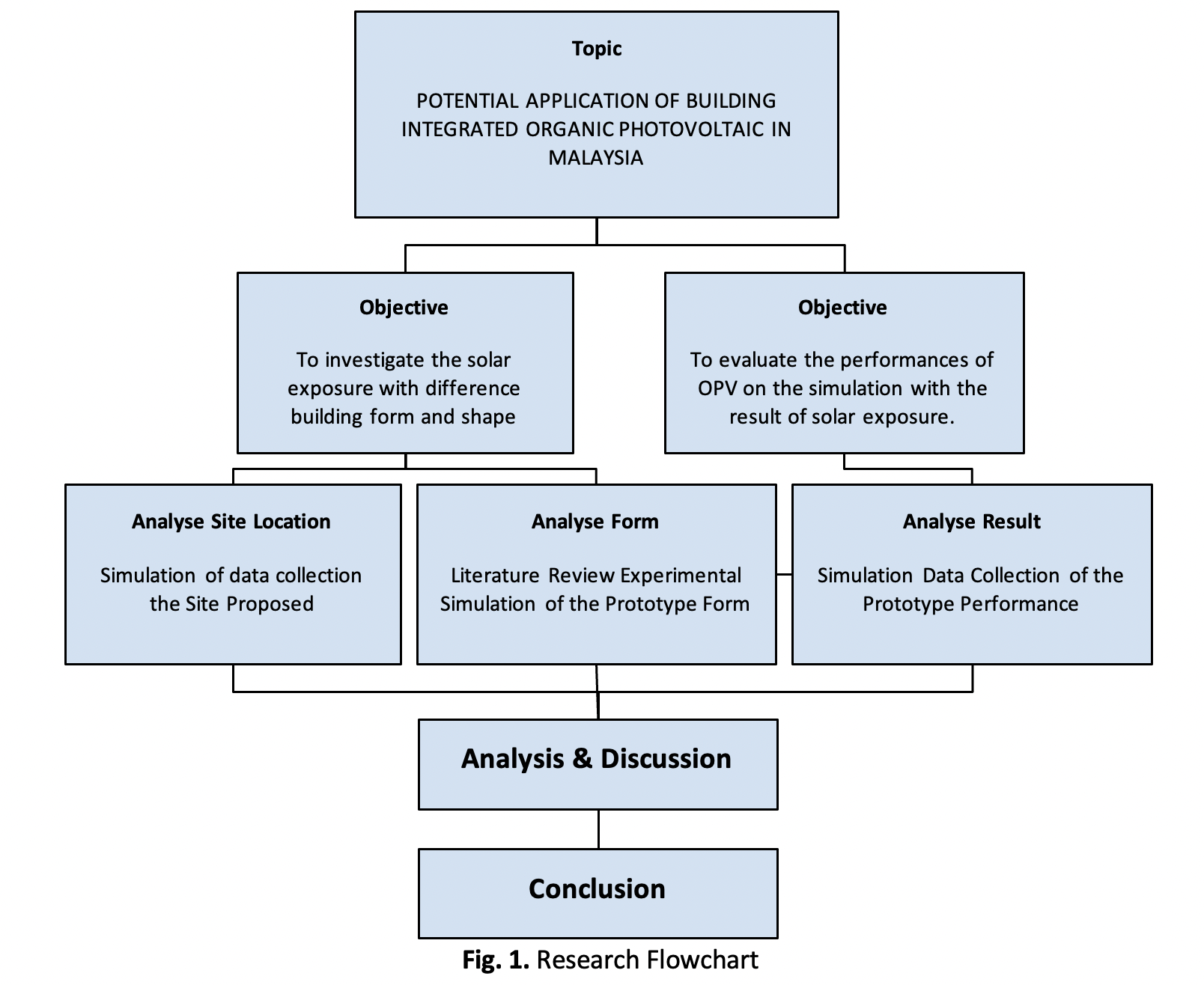Application of Building Integrated Organic Photovoltaic Various Building Forms in Malaysia
DOI:
https://doi.org/10.37934/araset.32.3.518533Keywords:
Form of active building envelop, flexible photovoltaic technology, 3rd generation photovoltaicAbstract
Research on Building Integrated Photovoltaic BIPV with Organic Photovoltaic (OPV) materials and systems has increased because of their promise to deliver low-cost solar energy conversion. Since OPV devices' efficiency has quickly risen to above 10%, there is a huge commercial need for further development and manufacturing. The development of specialized materials and device designs, together with an improved understanding of the BIOPV efficiency. This paper discusses recent advances in OPV material, with a particular emphasis on various methods for forming OPV facades and modifying the orientation of the form to better absorb incoming light sources. The findings need to go through 6 form designs that have been divided into dynamic and organic forms. This research used simulation from ARCHIWIZARD and PV*Sol to evaluate different building forms in terms of solar exposure and shadow effect. The result shows that the pyramid building form receives higher solar exposure compared to other forms, thus better electricity generation. The solar-optimized pyramid introduces an innovative fusion of architectural principles and contemporary solar technology to enhance energy generation and sustainability. By capitalizing on the pyramid's design, orientation, and light-concentrating attributes, it not only captures abundant sunlight but also symbolizes renewable energy, bridging historical aesthetics with modern eco-conscious solutions.
Downloads





























